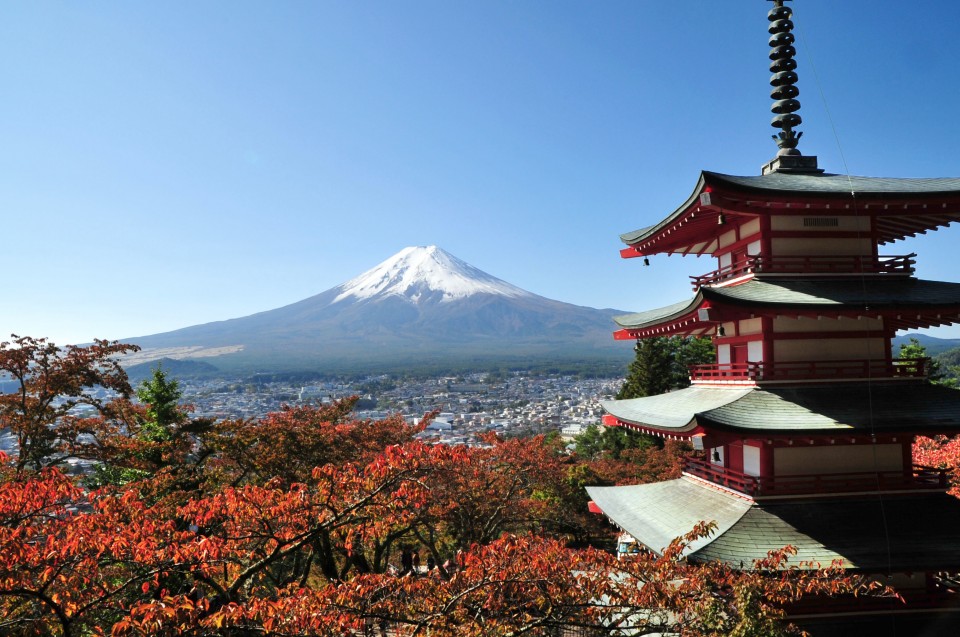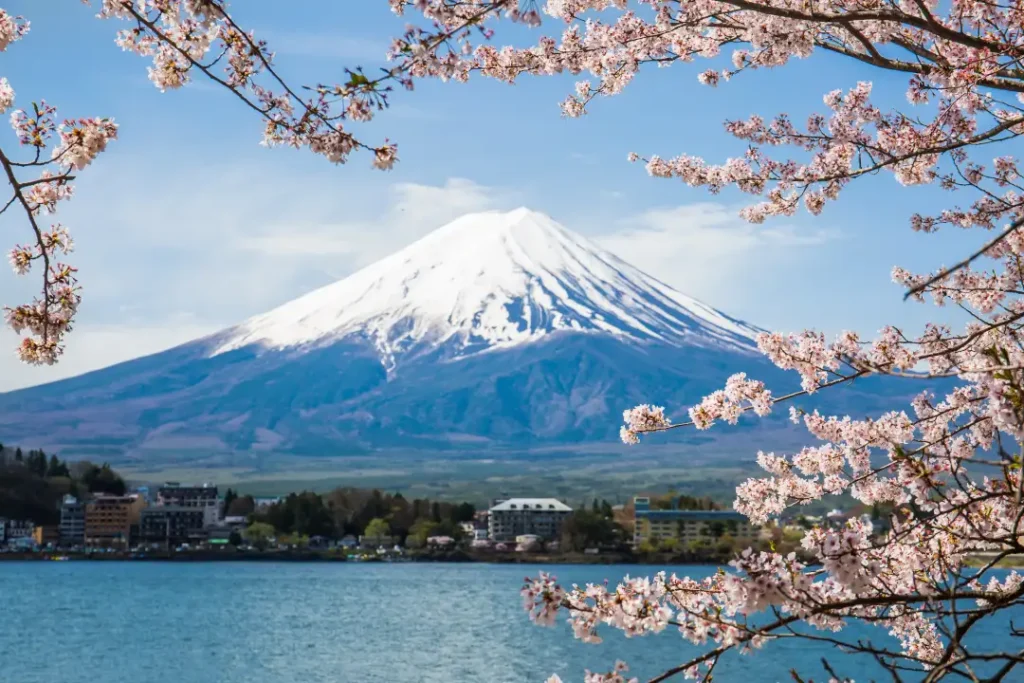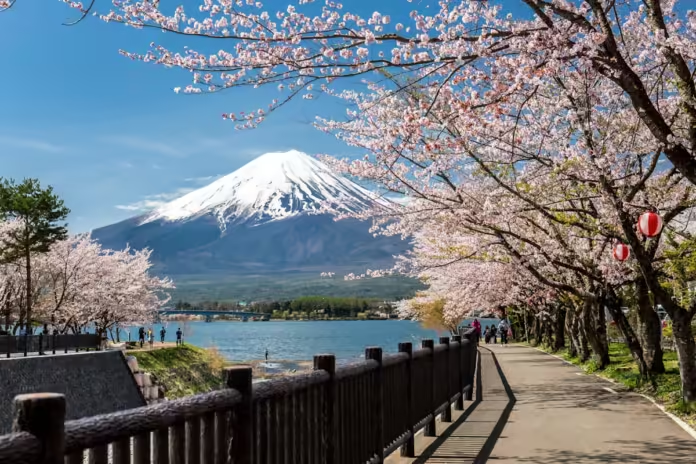Mount Fuji, or “Fuji-san,” is Japan’s iconic active volcano located approximately 100 kilometers southwest of Tokyo within the Fuji-Hakone-Izu National Park. Standing as Japan’s tallest peak at 3,776 meters, Mount Fuji is a symbol of national pride and a popular destination for both locals and tourists. The mountain’s total area spans 20,702 hectares, with its rock formations dating back 100,000 years.
Geographical and Cultural Significance
Straddling the boundary of Shizuoka and Yamanashi Prefectures, Mount Fuji is surrounded by four small cities: Gotemba to the east, Fujiyoshida to the north, Fujinomiya to the southwest, and Fuji to the south. The mountain is also encircled by five beautiful lakes—Lake Kawaguchi, Lake Yamanaka, Lake Sai, Lake Motosu, and Lake Shoji—which offer stunning views of the peak. On clear days, Mount Fuji can be seen from as far away as Yokohama, Tokyo, and even Chiba, Saitama, Tochigi, Ibaraki, and Lake Hamana.
Mount Fuji holds deep cultural significance in Japan, revered as one of the country’s three sacred mountains alongside Mount Tate and Mount Haku. Historically, it has been a pilgrimage site for Shinto and Buddhist followers. Today, the Fujisan Hongu Sengen Taisha owns the mountain, which was designated a UNESCO World Heritage Site on June 22, 2013.
Climbing Mount Fuji
Climbing Mount Fuji remains a popular activity, symbolizing purification and a journey from the world of the living to the world of the dead and back again. The official climbing season runs from early July to mid-September when the weather is most favorable, and the mountain is free of snow. However, climbing can be dangerous, especially outside the official season, and it has resulted in fatalities, including among international climbers.
The cost to climb Mount Fuji is 33,500 yen on weekdays, increasing by 20,000 yen on weekends and holidays. Despite the challenges, the experience is rewarding, offering breathtaking views and a profound sense of accomplishment.
Scenic Beauty and Attractions
Mount Fuji is surrounded by various attractions:
- The Five Lakes: Provide picturesque views and recreational activities.
- Aokigahara Forest: Located at the northwest base of Mount Fuji, this forest is shrouded in legends and known as a place of natural beauty and somber history.
- Cultural Landmarks: Numerous shrines and temples around the volcano.
- Artistic Depictions: Mount Fuji has inspired countless works of art, from paintings and woodblock prints to poetry and pottery.
Weather and Best Time to Visit
Mount Fuji has a tundra climate according to the Köppen climate classification. The summit remains below freezing for most of the year, with average summer temperatures around -7°C. The mountain receives rainfall year-round, with June being the wettest month. Historical temperature extremes include a record low of -38°C in February 1981 and a high of 17.8°C in August 1942.
For the best visibility and weather, visiting Mount Fuji between October and February, particularly in December and January, is recommended.
Aokigahara Forest
Aokigahara Forest, situated at the northwest base of Mount Fuji, is steeped in folklore and known for its haunting beauty. Often referred to as the “Sea of Trees,” it has been associated with ghosts, demons, and yūrei. Historically, it was a place where the very young and the very old were abandoned by poor families. Tragically, Aokigahara is also the third most popular suicide location in the world, with more than 500 recorded deaths since the 1950s.
Cultural Impact
Mount Fuji is deeply embedded in Japanese culture and mythology. In Shinto beliefs, it is associated with deities born from the chaos of the earth. The mountain features prominently in various art forms, including paintings, woodblock prints, poetry, music, theater, film, and even in the kawaii subculture.
Mount Fuji’s striking resemblance to other mountains, such as Mount St. Helens in the U.S. and Mount Taranaki in New Zealand, has made it a stand-in for these peaks in films and television.
Experience the Majesty of Mount Fuji
Mount Fuji is not just a natural wonder but a cultural treasure and a symbol of Japan’s rich heritage. Whether you’re hiking its slopes, exploring the surrounding lakes, or immersing yourself in its cultural significance, Mount Fuji offers an unforgettable experience for all who visit.


